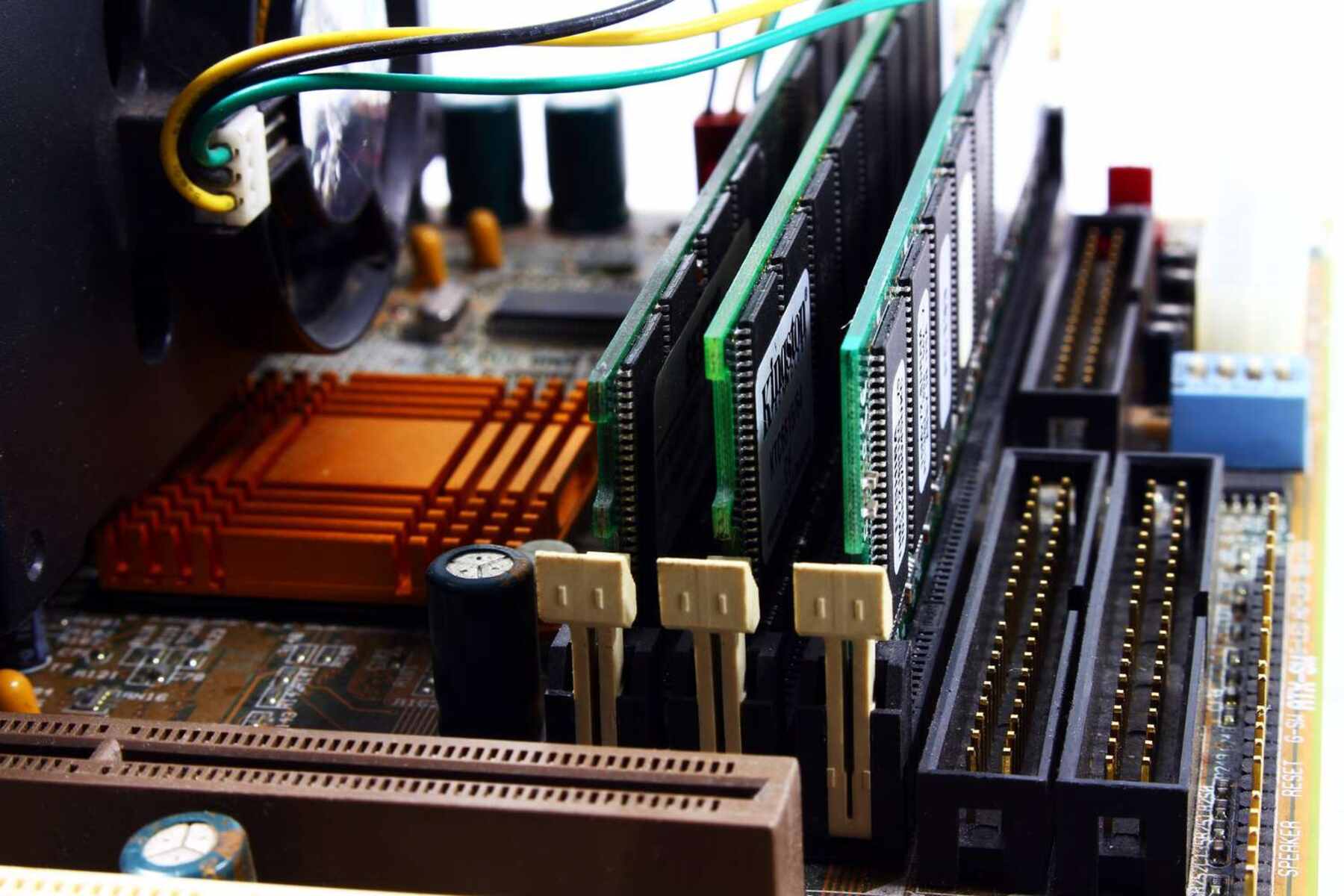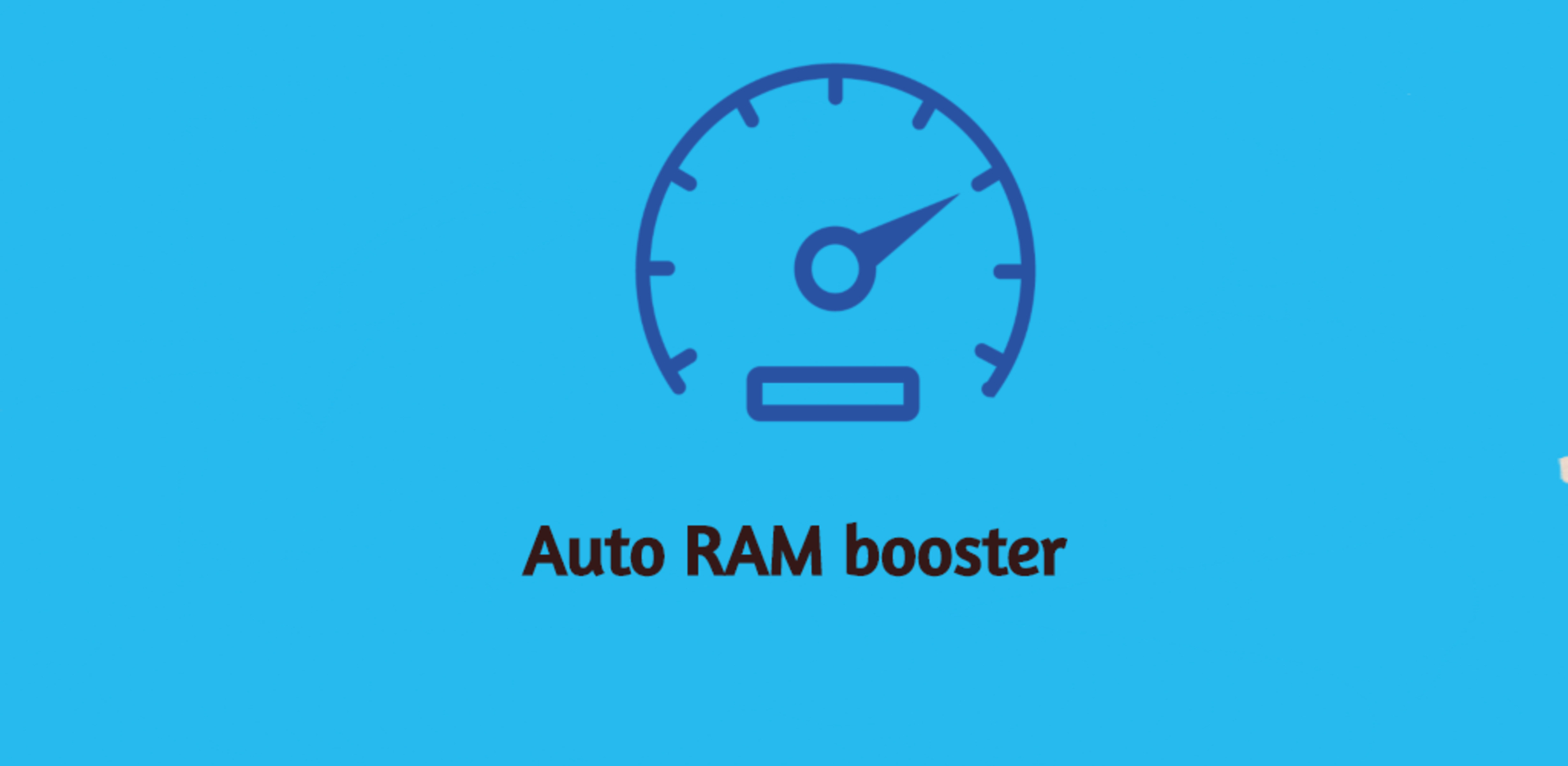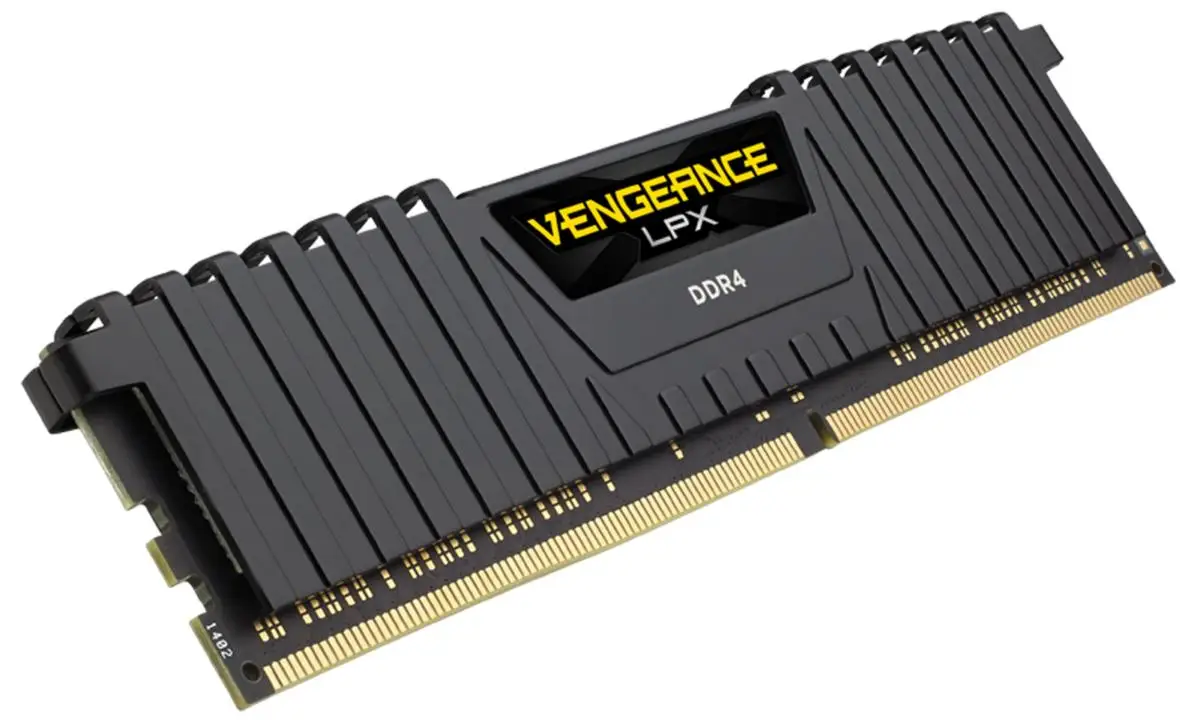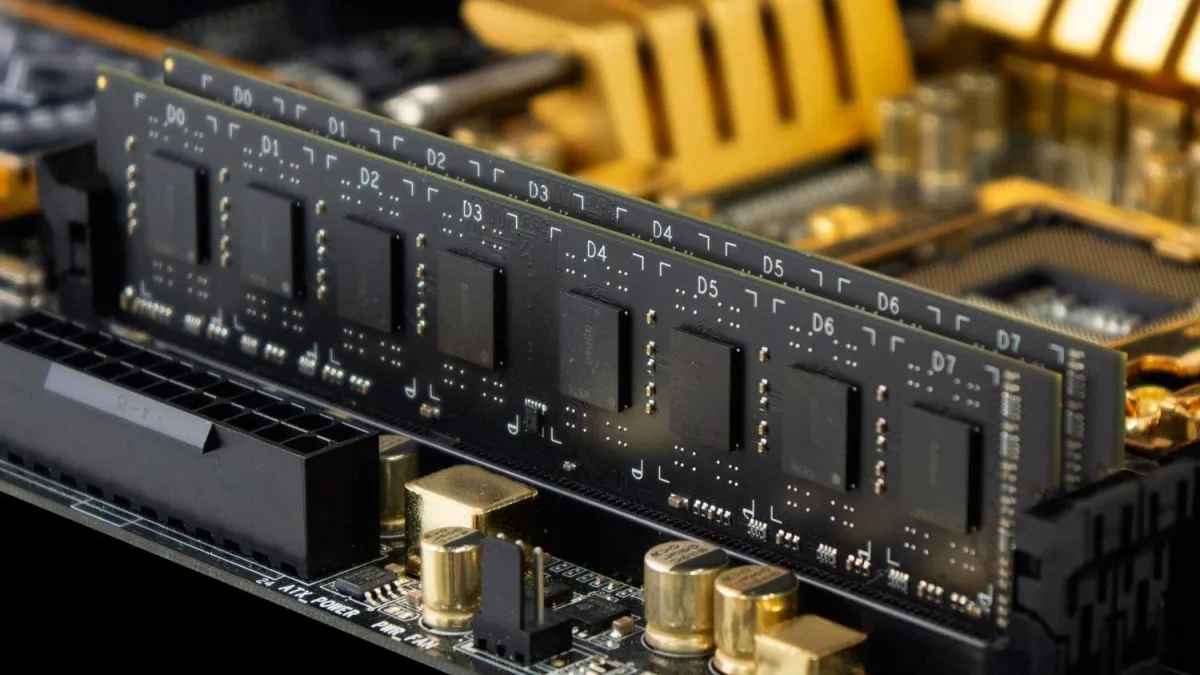Introduction
Welcome to this guide on optimizing your RAM! If you’ve ever experienced sluggish performance, slowdowns, or even system crashes on your computer, optimizing your RAM can be a game-changer. RAM (Random Access Memory) is an essential component of your computer’s overall performance. It is responsible for storing and accessing data that is currently in use by your operating system and applications.
When your RAM becomes overloaded or fragmented, it can lead to a decrease in your system’s speed and efficiency. This is why it’s important to regularly optimize your RAM to ensure that it’s functioning at its best. In this guide, we’ll explore some practical tips and techniques to help you get the most out of your RAM and improve your overall computing experience.
Whether you’re a casual computer user or a power user who frequently runs resource-intensive applications, optimizing your RAM can have a significant impact on your computer’s performance. By following the strategies in this guide, you can free up valuable system resources, reduce lag, and prevent system crashes.
Throughout the guide, we’ll cover various techniques such as monitoring your RAM usage, closing unnecessary programs, disabling startup programs, clearing temporary files, updating your operating system, checking for malware or viruses, increasing virtual memory, and even upgrading your RAM if needed. These strategies, when applied correctly, will help you optimize your RAM and make your computing experience smoother and more efficient.
So, let’s begin the journey to unleash the full potential of your RAM and enjoy a faster, more responsive computer. Get ready to optimize your RAM and take your computing experience to the next level!
Why is RAM Optimization Important?
RAM optimization plays a crucial role in improving the performance and overall efficiency of your computer system. Here are a few reasons why optimizing your RAM is important:
- Enhanced System Speed: RAM optimization helps ensure that your computer can access and retrieve data quickly. When your RAM is optimized, the operating system and applications can load and run faster, resulting in improved system speed and responsiveness.
- Increased Multitasking Capability: With optimized RAM, you can easily run multiple applications simultaneously without experiencing performance lags or slowdowns. This is particularly beneficial for users who work with resource-intensive tasks or frequently switch between various programs.
- Prevention of System Crashes: One of the primary causes of system crashes is insufficient RAM. When your computer runs out of RAM, it starts using the hard drive as virtual memory, resulting in slower performance and an increased likelihood of crashes. By optimizing your RAM, you can prevent these crashes and enjoy a more stable computing experience.
- Better Gaming Experience: Gamers often require a significant amount of RAM to run graphics-intensive games smoothly. By optimizing your RAM, you can allocate more resources to gaming applications, allowing for higher frame rates, reduced lag, and an overall improved gaming experience.
- Efficient Resource Utilization: When your RAM is optimized, it ensures that your computer allocates resources effectively. This means that only the required data and applications are kept in RAM, freeing up valuable system resources for other tasks and reducing unnecessary memory usage.
- Improved Productivity: By optimizing your RAM, you can significantly improve your productivity, as you won’t waste precious time waiting for applications to load or switching between programs. This increased efficiency allows you to accomplish tasks more quickly and effectively.
- Cost-Effective Solution: RAM optimization is a cost-effective way to enhance your computer’s performance. Instead of investing in expensive hardware upgrades, optimizing your RAM can give your system a noticeable boost without breaking the bank.
Overall, RAM optimization is essential for achieving optimal performance and maximizing the capabilities of your computer system. It ensures that your computer runs smoothly, efficiently utilizes resources, and provides an enjoyable user experience. By implementing RAM optimization techniques, you can unleash the full potential of your computer and make the most out of your hardware investments.
Check Your RAM Usage
Before diving into optimizing your RAM, it’s essential to understand how much RAM is currently being used by your computer. This information will help you determine if your RAM usage is reaching its limit and if optimization is necessary. Here are a few ways to check your RAM usage:
- Task Manager: On Windows, you can open the Task Manager by pressing Ctrl + Shift + Esc or right-clicking on the taskbar and selecting “Task Manager.” In the Task Manager, navigate to the “Performance” tab and click on “Memory” to see the current RAM usage. On macOS, open “Activity Monitor” (found in the Utilities folder within the Applications folder) and click on the “Memory” tab for RAM usage information.
- Resource Monitor: On Windows, the Resource Monitor provides a more detailed view of the RAM usage. To access it, open the Task Manager, go to the “Performance” tab, and click on “Open Resource Monitor” at the bottom. In the Resource Monitor window, navigate to the “Memory” tab for a comprehensive overview of the RAM usage, including specific processes and their memory usage.
- Third-Party Utilities: There are various third-party utilities available that can help you monitor your RAM usage. These utilities provide real-time statistics and additional insights into your RAM usage. Examples include CPU-Z, HWMonitor, and Speccy for Windows, and iStat Menus for macOS.
When monitoring your RAM usage, pay attention to the “Available” or “Free” RAM. This represents the amount of RAM that is not currently being used by any applications. If the available RAM is consistently low or near full capacity, it’s a sign that your system may benefit from RAM optimization.
Additionally, consider monitoring the RAM usage while running your usual workload or resource-intensive applications. This will give you a better understanding of how your system is utilizing RAM during regular usage scenarios.
By regularly checking your RAM usage, you’ll have a clear idea of whether optimization is needed. Monitoring this important system resource is the first step towards improving performance and ensuring that your computer functions smoothly and efficiently.
Close Unnecessary Programs
One of the most effective ways to optimize your RAM is to close unnecessary programs that are running in the background. Many applications automatically start when you boot up your computer and continue to run, even if you’re not actively using them. These programs consume valuable system resources, including RAM. Here’s how you can close unnecessary programs:
- Task Manager: On Windows, open the Task Manager by pressing Ctrl + Shift + Esc or right-clicking on the taskbar and selecting “Task Manager”. In the Task Manager, navigate to the “Processes” or “Details” tab (depending on your Windows version) to see a list of running processes. Identify the programs that you want to close, right-click on them, and select “End Task” or “End Process”. On macOS, press Command + Space to open Spotlight, type “Activity Monitor”, and press Enter. In the Activity Monitor, select the unwanted process and click the “X” button at the top left corner to quit the program.
- System Tray/Menu Bar: Many programs have icons in the system tray (Windows) or menu bar (macOS) to indicate that they’re running in the background. Right-click on these icons and look for options to close or exit the program. Some programs may have a “Quit” or “Exit” option, while others may require you to access the program’s settings or preferences to close it.
- Startup Programs: Some programs may be set to start automatically when you boot up your computer. This can unnecessarily consume RAM and slow down your system. To disable startup programs on Windows, open the Task Manager, navigate to the “Startup” tab, and disable any programs that you don’t need to start automatically. On macOS, go to System Preferences > Users & Groups > Login Items, and remove the programs you want to prevent from automatically starting.
By closing unnecessary programs, you free up valuable RAM for applications that you actively use, improving the overall performance and responsiveness of your computer. It’s a simple yet effective way to optimize your RAM and ensure that resources are allocated efficiently.
If you’re not sure which programs you can safely close, try to identify programs that you don’t recognize or rarely use. However, exercise caution and avoid closing essential system processes or programs required for your computer to function properly.
Remember to regularly review and close unnecessary programs to prevent them from unnecessarily using up your system’s resources. By doing so, you’ll optimize your RAM, reduce unnecessary memory usage, and improve the overall efficiency of your computer.
Disable Startup Programs
Disabling unnecessary startup programs can significantly improve your computer’s boot time and free up valuable system resources, including RAM. Many applications are configured to start automatically when you log in to your computer, and they continue to run in the background, consuming resources even if you don’t actively use them. Here’s how you can disable startup programs:
- Windows: On Windows 10, press Ctrl + Shift + Esc to open the Task Manager. Navigate to the “Startup” tab to see a list of programs that start automatically. Right-click on any program you want to disable and select “Disable”. Alternatively, you can manage startup programs through the Task Manager’s “Startup” folder located in the Start menu.
- macOS: On macOS, go to System Preferences and click on “Users & Groups”. Select your user account, go to the “Login Items” tab, and you will see a list of programs that start automatically. Select the programs you want to disable and click on the “- (minus)” button at the bottom to remove them from the startup list.
- Third-Party Tools: There are also third-party tools available that can help you manage startup programs more efficiently. Examples include CCleaner, Autoruns, and MSConfig for Windows, and CleanMyMac and AppCleaner for macOS. These tools provide more advanced features and offer additional control over the programs that start automatically.
When disabling startup programs, focus on applications that you don’t need immediate access to upon booting up your computer. Examples include software updaters, messaging apps, media players, or programs that you rarely use. Disabling these programs can help streamline your computer’s startup process and reduce the amount of RAM being consumed.
However, exercise caution when disabling startup programs. Avoid disabling essential system processes or programs required for your computer to function properly.
By disabling unnecessary startup programs, you can optimize your RAM and overall system performance. This will help improve your computer’s boot time and ensure that resources are allocated efficiently, freeing up valuable RAM for the applications you use actively.
Remember to review your startup programs periodically, as new applications may get added to the list over time. By keeping only essential programs enabled, you can ensure a faster and more efficient startup experience.
Clear Temporary Files
Over time, temporary files accumulate on your computer, taking up valuable storage space and potentially slowing down your system. These temporary files include cache files, browser history, temporary installation files, and other temporary data generated by applications. Clearing these files regularly can not only free up disk space but also help optimize your RAM. Here are some ways to clear temporary files:
- Windows Disk Cleanup: On Windows, you can use the built-in Disk Cleanup tool to clear temporary files. To access it, open the Start menu, type “Disk Cleanup,” and select the corresponding result. Choose the drive you want to clean (usually the C: drive), and the tool will scan for temporary files that can be safely deleted. Check the boxes next to the types of files you want to remove, such as temporary files, cache files, or downloaded program files, and click “OK” to start the cleaning process.
- macOS Cleanup Utilities: On macOS, you can use built-in utilities like Disk Utility and Optimized Storage to clear temporary files. Disk Utility helps you identify and remove unnecessary files and folders, while Optimized Storage automatically manages and removes temporary files, cache, and unused items to free up disk space. To access these utilities, go to Applications > Utilities and select Disk Utility or System Preferences > Apple ID > Manage > Recommendations.
- Third-Party Tools: There are also third-party tools available that can help you clean up temporary files more efficiently. Examples include CCleaner, CleanMyPC, and BleachBit for Windows, and CleanMyMac and Onyx for macOS. These tools offer advanced features, allowing you to clean up temporary files and optimize your system with a few clicks.
Clearing temporary files not only helps optimize your disk space but also improves the performance of your computer. By removing unnecessary files, you reduce the workload on your RAM and allow it to allocate resources more effectively.
It’s important to note that clearing temporary files should be done cautiously. Be sure to review the files that will be deleted before proceeding, as some temporary files may be in use and required by certain applications. Deleting critical files can cause issues, so exercise caution and use reputable tools and utilities.
By regularly clearing temporary files, you can optimize your RAM, free up storage space, and ensure a more efficient and responsive computing experience. Remember to incorporate this maintenance task into your routine to keep your system running smoothly.
Update Your Operating System
Keeping your operating system up to date is crucial for optimal performance and security. Operating system updates often include bug fixes, performance enhancements, and security patches that can improve your computer’s overall efficiency and stability. Here’s why it’s important to regularly update your operating system:
- Improved Performance: Operating system updates often include performance optimizations that can enhance the speed and responsiveness of your computer. These updates may optimize resource allocation, streamline processes, and improve memory management, resulting in a more efficient utilization of your RAM.
- Bug Fixes: Operating system updates address known bugs and issues that can affect the overall performance and stability of your system. By installing these updates, you can resolve software conflicts, memory leaks, and other issues that may consume excessive RAM and cause slowdowns or crashes.
- Security Enhancements: One of the primary reasons to update your operating system is to stay protected against security vulnerabilities. Hackers constantly discover new methods to exploit operating systems, and software updates often include security patches that fix these vulnerabilities. By regularly updating your operating system, you can ensure that your computer remains secure and reduce the risk of malicious attacks.
- Compatibility with New Software: As new software and applications are developed, they often require the latest version of the operating system to run smoothly. By updating your operating system, you ensure compatibility with new software releases, allowing you to take advantage of the latest features and capabilities without sacrificing system performance.
- Support and Maintenance: Software manufacturers typically focus their support and maintenance efforts on the latest operating system versions. By using an updated operating system, you can access the latest support resources, software updates, and documentation, making it easier to troubleshoot issues and receive assistance when needed.
To update your operating system, follow these general steps:
- Windows: On Windows, go to the Start menu and search for “Windows Update”. Click on “Check for updates” and let Windows search for the latest updates. If updates are available, click on “Install” to begin the installation process.
- macOS: On macOS, go to the Apple menu, select “System Preferences” and click on “Software Update”. macOS will check for available updates, and if any are found, click on “Update Now” to download and install the updates.
- Linux: The process of updating your operating system may vary depending on the Linux distribution. Generally, you can use the package manager to update your system. For example, on Ubuntu, you can use the command “sudo apt update” followed by “sudo apt upgrade” to update your system.
By keeping your operating system up to date, you ensure that your computer is running on the latest software version, benefiting from enhancements, bug fixes, security patches, and compatibility with new software releases. Regular updates are an essential part of maintaining a reliable, secure, and optimized computing experience.
Check for Malware or Viruses
Malware and viruses can significantly impact your computer’s performance and compromise the security of your data. These malicious programs can consume your system’s resources, including RAM, resulting in slower performance, crashes, and other issues. It’s crucial to regularly check for malware or viruses to ensure your computer is free from these threats. Here’s how you can check for malware or viruses:
- Antivirus Software: Install reputable antivirus software and keep it updated. Perform regular scans of your system to detect and remove any malware or viruses. Enable real-time scanning to continuously monitor your system for potential threats. Popular antivirus software options include Norton, Kaspersky, Bitdefender, Avast, and AVG.
- Windows Defender: If you’re using Windows, you have built-in protection with Windows Defender. Make sure it is enabled and kept up to date. Run a full scan regularly to check for malware or viruses on your system.
- Malware Removal Tools: In addition to antivirus software, there are specialized tools designed specifically for detecting and removing malware. Examples include Malwarebytes, Spybot – Search & Destroy, and AdwCleaner. Download and run these tools periodically to supplement your antivirus software.
- Browser Extensions: Install reputable browser extensions such as AdBlock Plus or uBlock Origin to block malicious ads and potential sources of malware. These extensions can help protect your system while browsing the internet.
- Safe Internet Practices: Be cautious when downloading files or clicking on suspicious links. Avoid downloading files from unknown sources and be wary of email attachments from unfamiliar senders. Practice safe browsing habits and ensure that you are visiting trusted websites that have a secure connection.
Regularly checking for malware or viruses is essential for keeping your computer healthy and optimizing your RAM. Malware and viruses not only consume system resources but can also steal confidential information or cause irreparable damage to your system. By taking proactive measures to prevent and detect malware, you protect your computer and maintain optimal performance.
Remember to update your antivirus software and run scans regularly, especially after downloading or installing new software. Stay vigilant and keep your guard up to ensure a safe and secure computing experience.
Increase Virtual Memory
Virtual memory is a system feature that uses part of your hard drive space as additional memory to supplement your physical RAM. By increasing virtual memory, you can provide more breathing room for your system and potentially improve overall performance. Here’s how you can increase virtual memory:
- Windows: On Windows, you can adjust virtual memory settings by following these steps:
- Open the “System” settings by right-clicking on “This PC” (or “My Computer” in older versions of Windows), selecting “Properties,” and then clicking on “Advanced system settings” on the left side of the window.
- In the “System Properties” window, go to the “Advanced” tab and click on the “Settings” button under the “Performance” section.
- In the “Performance Options” window, go to the “Advanced” tab and click on the “Change” button under the “Virtual memory” section.
- Uncheck the “Automatically manage paging file size for all drives” option if it’s enabled. Select the drive that contains your operating system (usually the C: drive) and choose the “Custom size” option.
- Specify an initial size and a maximum size for the virtual memory. It’s generally recommended to set the initial size to the amount of physical RAM installed on your system and set the maximum size to around 1.5 times the size of your physical RAM (e.g., initial size: 4096 MB, maximum size: 6144 MB).
- Click “Set” and then “OK” to save the changes. You may be prompted to restart your computer for the new settings to take effect.
- macOS: On macOS, the operating system manages virtual memory automatically and dynamically. However, you can optimize your system’s virtual memory settings by following these steps:
- Go to the Apple menu and select “System Preferences”.
- Click on “Memory” or “Energy Saver”, depending on your macOS version.
- In the “Memory” tab, you can manually set the virtual memory size by adjusting the “Swap used” slider. Increasing the swap space allows macOS to use more virtual memory.
- Alternatively, you can use third-party tools like iBoostUp or Memory Clean to optimize virtual memory settings on macOS.
Increasing virtual memory provides your system with more virtual RAM space, allowing it to handle larger workloads and reducing the likelihood of running out of memory. However, it’s important to note that virtual memory is not as fast as physical RAM, so relying too heavily on it may result in slightly slower system performance.
Adjusting virtual memory settings can be particularly helpful if you regularly work with memory-intensive applications or perform tasks that require large amounts of memory. Additionally, if you find that your system frequently experiences low memory warnings or slowdowns due to insufficient RAM, increasing virtual memory can help mitigate these issues.
Remember to monitor your system’s performance after adjusting virtual memory settings. If you notice any adverse effects, such as frequent disk access or increased processing time, you may need to fine-tune the virtual memory size to find an optimal balance between RAM and virtual memory usage.
Increasing virtual memory can be a useful approach to optimize your system’s memory management and ensure smooth performance when dealing with memory-intensive tasks. Experiment with the recommended settings mentioned above and adjust them based on your specific needs and system requirements.
Add More RAM
If your computer is still facing performance issues and you find it frequently running out of memory, adding more RAM can be an effective solution. RAM (Random Access Memory) is a physical hardware component that temporarily stores data and instructions that your computer’s processor needs to access quickly. By increasing the amount of RAM in your system, you can provide more memory space for your computer to work with, thereby improving overall performance. Here’s how you can add more RAM:
- Identify Compatible RAM: First, determine the type of RAM that is compatible with your computer. This information can usually be found in your computer’s manual or by checking the documentation on the manufacturer’s website. Make sure to determine the maximum amount of RAM your computer can support as well.
- Purchase the Right RAM: Once you’ve identified the compatible RAM type and maximum supported capacity, purchase the appropriate RAM modules from a reliable vendor. Ensure that the RAM modules you purchase are of the same type and have matching specifications, such as speed and voltage, to maintain optimal compatibility.
- Power Off and Open Your Computer: Before installing the new RAM, shut down your computer and unplug it from the power source. Open the computer case by removing the necessary screws or latches, taking necessary precautions against static electricity by grounding yourself. Refer to your computer’s manual or online resources for guidance specific to your model if needed.
- Locate and Insert RAM Modules: Locate the current RAM slots on your computer’s motherboard. Gently press the retention clips on either side of the slot to release the existing RAM module and carefully remove it. Align the notch on the new RAM module with the corresponding slot on the motherboard and firmly insert it, ensuring the retention clips click into place to secure the module.
- Close Your Computer and Power On: Once the new RAM modules are installed, close your computer case and secure it with the screws or latches. Reconnect any cables that were disconnected. Power on your computer and check if the new RAM is recognized by accessing the system properties or using third-party system monitoring tools.
Increasing the amount of RAM in your system allows for more data to be stored and accessed simultaneously, reducing the need for the computer to rely on slower virtual memory. As a result, you should experience improved multitasking capabilities, smoother performance with resource-intensive applications, reduced system slowdowns, and a more responsive computing experience overall.
Adding more RAM is particularly beneficial if you work with memory-intensive tasks, such as video editing, graphic design, gaming, or running virtual machines. However, keep in mind that adding more RAM may not always be necessary if your usage doesn’t demand it. Analyze your specific needs and usage patterns before deciding to upgrade your RAM.
Additionally, it’s worth noting that adding more RAM may require the assistance of a professional, especially if you’re not comfortable working with computer hardware. If you’re unsure or hesitant, consulting with a knowledgeable technician or computer specialist can help ensure that the installation is performed correctly and compatible with your system.
By adding more RAM, you can significantly enhance your computer’s performance, allowing for smoother multitasking and improved responsiveness. Consider upgrading your RAM if your system regularly experiences memory-related issues and if you need to accommodate more demanding tasks.
Conclusion
Optimizing your RAM is an important step towards achieving better performance, responsiveness, and efficiency on your computer. By following the strategies outlined in this guide, you can make the most out of your system’s memory resources and enhance your overall computing experience.
We started by understanding the significance of RAM optimization and the impact it can have on your system’s speed, multitasking capabilities, stability, and even gaming performance. We then explored various methods to optimize your RAM, including monitoring your RAM usage, closing unnecessary programs, disabling startup programs, clearing temporary files, updating your operating system, checking for malware or viruses, increasing virtual memory, and adding more RAM.
Checking your RAM usage, closing unnecessary programs, and disabling startup programs are effective ways to free up valuable system resources and ensure that your RAM is efficiently utilized. Clearing temporary files helps reduce clutter and optimize disk space, further enhancing your system’s performance. Updating your operating system is crucial for obtaining bug fixes, security patches, and improved compatibility, while checking for malware or viruses safeguards your system against potential threats.
By increasing virtual memory, you can expand your system’s memory capacity, reducing the chances of running out of RAM when working with memory-intensive tasks. Lastly, if your system still struggles with low memory, adding more RAM can provide a substantial boost in performance and multitasking capabilities.
Remember that optimizing your RAM requires a combination of proper software management, regular maintenance, and, in some cases, hardware upgrades. Analyze your specific needs, usage patterns, and budgetary constraints to determine the most suitable strategy for your computer.
With the information and techniques provided in this guide, you now have the knowledge to optimize your RAM effectively. Implement these practices regularly to keep your system running smoothly, efficiently allocate resources, and enjoy a faster, more responsive computing experience.
So, let’s take the first step towards optimizing your RAM and unlocking the full potential of your computer!

























